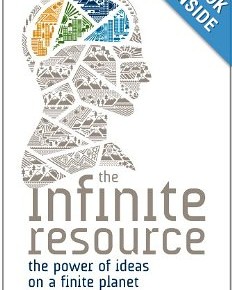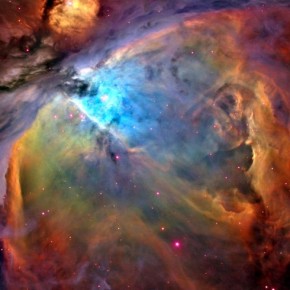We Are Our Own Best Resource
by Charlotte Capaldo
State of the world publications typically support two common threads: pessimism, and politics. In our bipartisan nation opinions are often shaped by our political affiliates interpretations’ of science. In their attempt to win votes, political leaders tie things like climate change to other political issues, tossing the matter into the bottomless pot of political debates. Yet in his book The Infinite Resource: The Power of Ideas on a Finite Planet, Ramez Naam offers a refreshing perspective to the dreary story to which we have grown accustomed, depoliticizing the science because he believes we can change.
As an Egyptian immigrant to the United States, Naam’s life has been one of overcoming the odds. His parents taught him how to pursue a life seemingly out of reach, leading him to the land of diverse opportunities. Naam says this fuels his optimism, and his account begs of the reader to forge their own path of self-discovery to mine the humility the world needs to continue in prosperity. Naam reminds us that we all have something to fight for together.
Naam is not shy about tackling just about every aspect of the changing world, concisely arguing that, with the right choices, we, the planet and its citizens, will live long and prosper. There is something to appeal to everyone in this book, both the developed and the developing world. Tales of adventure narrate the informative text, which is littered with shocking facts and surprising insights. We see Naam riding his bicycle the length of Vietnam, hiking through the Guatemalan rainforest, and to the peak of Mount Rainier in the dark morning hours with a dead head lamp. This man has seen some of the most exotic ecosystems on the planet—and not just on a screen narrated by David Attenborough. His love of the natural world is apparent, as well as his love of humanity, whom he commends throughout the book as great problem-solvers, reminding readers of the feats we’ve accomplished in developing this planet.
Innovators, politicians and corporations alike have continuously made life on earth more efficient. As densely populated countries like China and India enter the developed world, the notion of finiteness plagues our thoughts. Naam, though, argues that while resources are finite, knowledge only accumulates—it is the “invisible resource,” and a multiplying agent of physical resources. While we may run out of oil, we will never run out of innovative ideas about new energy sources to replace or conserve it.
Naam states that “it doesn’t matter where innovation comes from. The best of them will spread. What matters most is that we encourage more innovation, period. And the best way to do that is to see the developing world rise out of poverty and into wealth.” His story is full of ideas—plans really—about turning the tables. It is a worthy read for anyone remotely interested in, or concerned with the state of humanity and the planet. His invigorating and factual tale will inspire hope in you, and will implore you to discover your own source of optimism.
Ramez Naam’s book, The Infinite Resource: The Power of Ideas on a Finite Planet is available here: http://www.amazon.com/Infinite-Resource-Power-Finite-Planet/dp/161168255X/ He’s available to speak at startups and networking events around the San Francisco Bay Area.
Charlotte Capaldo is a freelance science and technical writer in the San Francisco Bay Area. She may be reached at charlotte.capaldo@gmail.com


